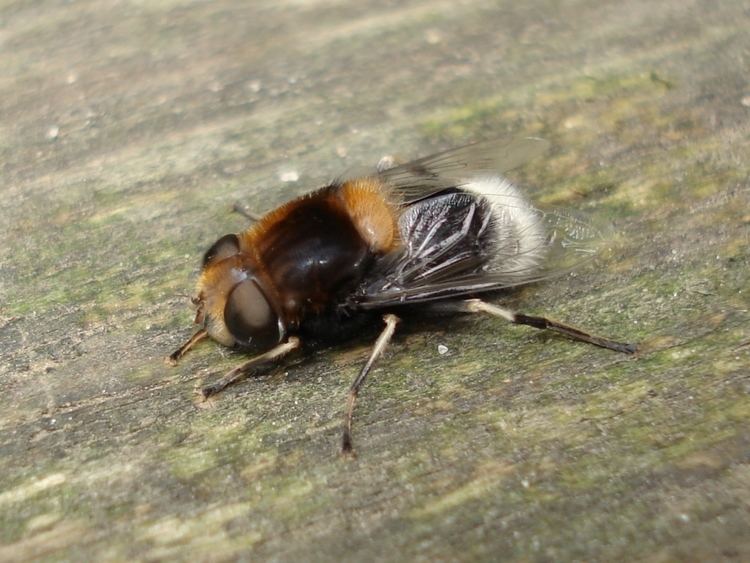Kingdom Animalia Class Insecta Family Syrphidae Scientific name Eristalis intricarius | Phylum Arthropoda Order Diptera Genus Eristalis Rank Species | |
 | ||
Similar Eristalis arbustorum, Eristalis pertinax, Eristalis interruptus, Eristalis, Helophilus trivittatus | ||
Eristalis intricarius
Eristalis intricaria is a European species of hoverfly. It is a furry bee mimic, superficially resembling Merodon, though Merodon have all black leg tibiae, as opposed to partly yellow. E. intricarius is somewhat variable in colour pattern, and some attempts at naming varieties have been tentatively made. Flight time of adults in the UK are from March to September. It is generally widespread, but is seldom seen in large numbers. Habitat is woodland or marshland.
Contents
Description
External images For terms see Morphology of Diptera
Wing length 8·25-12 mm. Antennomere 3 brownish-black. Arista plumose on basal half. Squamulae greyish-black.Thorax and abdomen covered with long densely placed hairs, varying in colour from tawny (typical form) to black (var. furvus Verrall).Typical form dimorphic (male abdomen brownish-haired, female abdomen with blackish hairs, last tergite with white hairs). The male genitalia are figured by Hippa et al. (2001) The larva is figured by Hartley (1961)
Distribution
Palaearctic Fennoscandia, Iceland and the Faroes South to central Spain, montane in the southern limit of its range and absent from most of South Europe.Ireland East through North Europe and Central Europe, Alps, into Russia as far as East Siberia.
Biology
The habitat is wetland; raised bog, fen, fen carr, poorly-drained deciduous forest and humid, seasonally-flooded grassland, boreal forests, taiga, montane tundra. Flowers visited include white umbellifers yellow composites, Ranunculaceae, Armeria maritima, Cakile, Calluna vulgaris, Cirsium, Crataegus, Filipendula, Jasione, Ligustrum, Lythrum, Mentha, Polygonum cuspidatum, Prunus spinosa, Pyrus communis, Rhododendron, Rubus, Salix, Succisa. The flight period is mid April to end August.The occurs in mud and fen peat beside water, in field drains, slurry and in cow dung on water-logged ground.
